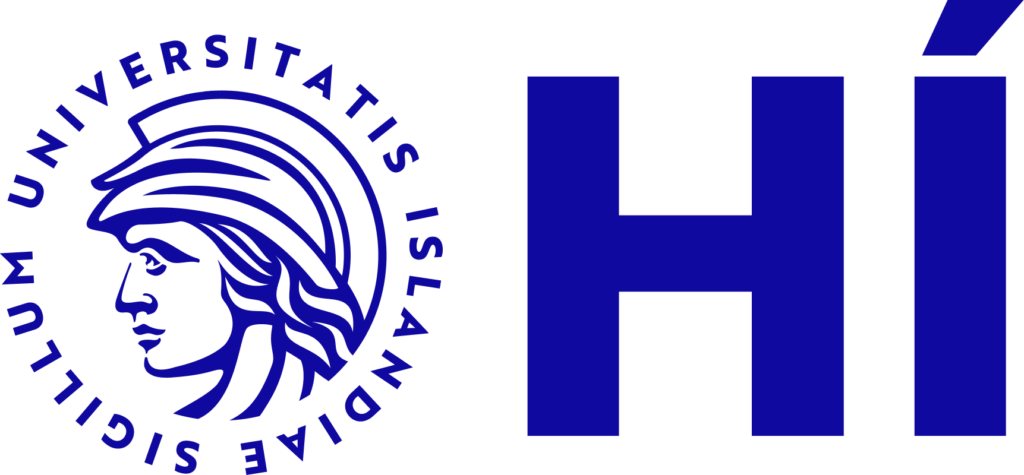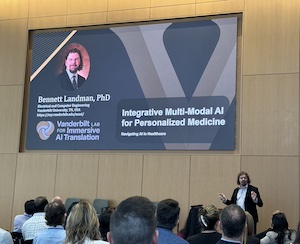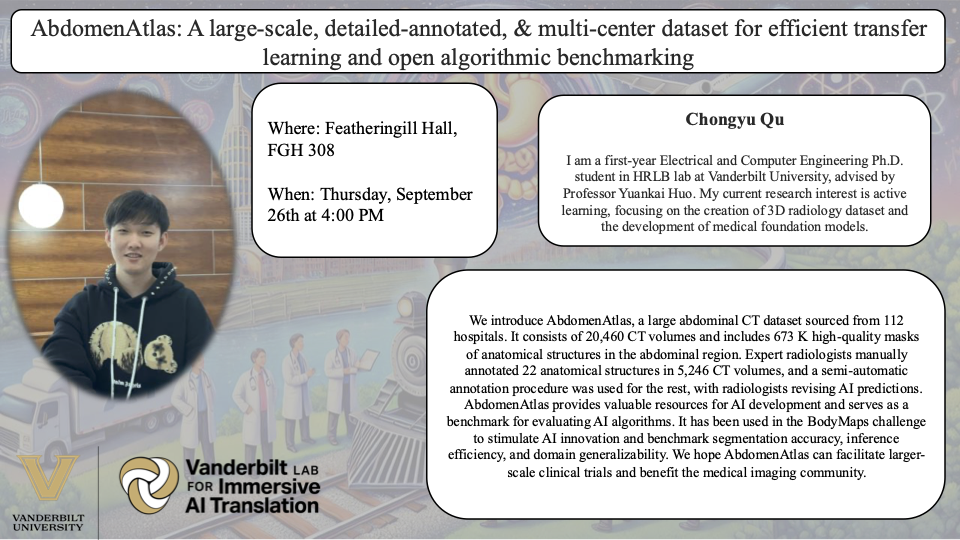
Friends,

Val, our AI cat, has fully moved into the new VALIANT space in Featheringill / Jacobs Hall and triggered vibrant discussions ranging from impressionism to cubism with a bit of masked auto-encoders and latent diffusion models sprinkled in. While Val is in an impressionism phase, our VALIANT Attempt’s Maru went for pop-art realism (right). Thank you VALIANT Scholars for making our first event a success, stay tuned for more! We are working on the a few last knock-list items so that we can welcome all ideas and creative expression along with y’all to the VALIANT innovation hub later this fall.
Along with VALIANT’s launch, I have been super energized by the return of the undergraduates to campus. In our intro to engineering module, students used Raspberry Pi devices to implement reinforcement learning, unlock a VUID-activated safe, and remotely played a remote-sensing musical device. Meanwhile, in our Studio in AI course, student AI-enabled projects range from matching estranged socks to personalized fashion advice. I’m even keeping my coding skills warm with an AI-powered vase of flowers.
As you can see below, this has been a great month for research wins. I am confident that our dynamic and collaborative community around AI will spur transformative ideas.
– Bennett
Engineering the Future of AI
 Dr. Shunxing Bao, a VALIANT Fellow and Research Assistant Professor of Electrical and Computer Engineering at Vanderbilt University, has been on a dynamic journey of discovery and innovation since joining Vanderbilt in 2012 as a master’s student. His work spans across cutting-edge AI and big data informatics, particularly focused on advancing medical image processing and bioinformatics.
Dr. Shunxing Bao, a VALIANT Fellow and Research Assistant Professor of Electrical and Computer Engineering at Vanderbilt University, has been on a dynamic journey of discovery and innovation since joining Vanderbilt in 2012 as a master’s student. His work spans across cutting-edge AI and big data informatics, particularly focused on advancing medical image processing and bioinformatics.
Reflecting on his transition from an industry-focused background in software engineering, Bao said, “I didn’t have any research experience when I first arrived at Vanderbilt. But through collaboration and exposure to clinical applications, I grew more interested in research.” Over his 12 years at Vanderbilt, he has seen the evolution from a focus on big data to the rapid rise of AI techniques, which now dominate the landscape.
Bao credits Vanderbilt’s collaborative environment as a key factor in his decision to stay. “It’s the clinical collaboration that sets Vanderbilt apart,” he said, highlighting the university’s access to clinical data and renowned medical teams. His most impactful projects involve leveraging AI to improve clinical diagnostics and bioinformatics systems, with the goal of making these technologies more efficient and accessible for clinicians.
Bao shared his excitement about fostering stronger interdisciplinary partnerships. “VALIANT is about bringing together engineering and clinical worlds, using AI to address real-world problems,” he noted. He envisions VALIANT as a platform that bridges gaps across departments, enabling researchers from diverse fields to collaborate and push the boundaries of AI research.
As Bao looks to the future, he remains passionate about the potential of AI to revolutionize medical research and clinical practice, driving new discoveries and creating broader impact across different domains.
Alumni Lookout

This story from the field is brought to us by Dr. Shikha Chaganti (PhD’19, Vanderbilt Computer Science), R&D Program Manager at Siemens Healthineers. Her work has a strong focus on Artificial Intelligence in medicine, with contributions to several AI applications ranging from imaging in cancer to COVID-19 and clinical decision systems. Shikha is passionate about research and development in the area of healthcare, and hopes to bring data-driven wellness grounded in precision and individualized care to people everywhere.
The human body is a complex system, with multiple physiological processes interacting in delicate balance. Many medical issues, especially chronic illnesses, stem from a combination of physiological factors, lifestyle choices, and external influences such as the environment and socioeconomic conditions. According to the CDC, chronic disease is the public health challenge of the 21st century. In the U.S., 60% of adults suffer from a chronic condition, and 90% of the $4.5 trillion healthcare expenditure is spent managing these conditions and mental health. Artificial Intelligence (AI) and Machine learning (ML) provide innovative opportunities to tackle these complex health issues.
One of the most exciting developments in this space is the concept of digital twins (DTs) in healthcare. A DT is a virtual, lifelong replica of a patient’s body, created by integrating diverse sources of data such as physiological information, medical history, environmental factors, and lifestyle behaviors. These data sources—often siloed in systems like electronic health records (EHRs), imaging archives (PACS), pathology reports, genetic data, and wearable devices—are combined to form a comprehensive and dynamic model of a patient’s health. These allow for continuous monitoring of a patient’s health in real-time to detect subtle changes in health, providing early warnings for potential issues before they become serious. For chronic disease management, this means identifying trends and predicting adverse events, which will enable proactive intervention rather than reactive treatment. DTs could also be used to simulate various treatments or interventions in the virtual space before applying them to the real patient. Clinicians can see how a specific drug, therapy, or lifestyle change would affect the patient’s virtual twin, leading to more precise recommendations. With DTs, healthcare providers can predict how a patient’s condition might evolve over time based on their unique data. As healthcare shifts from a one-size-fits-all approach to a personalized model, patients can expect better outcomes and improved overall health.
The potential for AI/ML in digital twins of healthcare is vast, but challenges remain. For years, the field was limited by computational power and access to data, making it difficult to develop models that could consider the full scope of a patient’s medical history. However, recent advances in computational capabilities and model architectures—such as GPT-4V, Claude3, Gemini Pro Vision, and LLaVa — that can deal with multi-modal, longitudinal data present an exciting paradigm shift. Large language models such as GPT-4, Llama-3, and Mistral 7B have been useful in dealing with unstructured clinical data such as notes and reports, and are useful for creating patient data models from diverse sources. In additional to technical challenges, there are also concerns around data privacy, regulation, and ethics, which are important areas of study. For current and future AI/ML scientists in this field, these challenges offer exciting career opportunities across a diverse range of areas.
“During my PhD in Computer Science at Vanderbilt, I focused on AI/ML models for medical image processing. I also had the opportunity to participate in a clinical immersion fellowship, where I observed real-world clinical cases and gained insight into the complexity of disease presentation. I observed the need for technology to help provide clinicians the right data at the right time to diagnose and treat diseases more accurately. At the MASI lab, I developed context-aware models that combined historical clinical data with medical imaging, improving patient care outcomes. I’m fortunate to continue some of the same work at Siemens Healthineers.”
VALIANT Ventures
- Profs. Huo and Wernke received a $625K NSF grant for the largest-ever archaeological survey.
- Prof. Landman is working with Ryan Hsi, MD (VUMC) and Gregory Tasian, MD (Children’s Hospital of Philadelphia) on the Urinary Stone Disease Hub (USDHub) to de-identify patient data from over 230,000 individuals with kidney stone disease across nine health systems in the U.S.
- Prof. Huo received a grant from KPMP for 3D Image-Omics Integration for Spatial Transcriptomics in High Definition.
- Profs. Landman and Mandonado recieved an award from the NCI to Characterize the Natural History of all lung nodules for all patients in the national lung screening trial (NLST).
- Professors Landman, Jordan, and Jasser have received a grant to investigate neurocognitive deficits in children with type 1 diabetes (T1D), with a focus on identifying modifiable risk and protective factors, optimizing neuroimaging protocols, and ultimately improving brain health and diabetes management outcomes.
AI Summer School
 We’re pleased to announce a new partnership with the innovative AI research community at the University of Iceland. By combining our expertise in medical AI with Iceland’s cutting-edge work in data science and language technologies, this collaboration promises to drive forward impactful research and real-world applications. Explore opportunities to join us as an AI Scholar or AI Fellow and contribute to the future of AI innovation.
We’re pleased to announce a new partnership with the innovative AI research community at the University of Iceland. By combining our expertise in medical AI with Iceland’s cutting-edge work in data science and language technologies, this collaboration promises to drive forward impactful research and real-world applications. Explore opportunities to join us as an AI Scholar or AI Fellow and contribute to the future of AI innovation.Cloud and AI
 This month, we were thrilled to present on Healthcare AI at the Amazon Web Services (AWS) Healthcare Executive AI Forum hosted by the Owen Graduate School of Management.
This month, we were thrilled to present on Healthcare AI at the Amazon Web Services (AWS) Healthcare Executive AI Forum hosted by the Owen Graduate School of Management.
A VALIANT Ascent

Whispers of code rise,
Teamwork shapes unseen futures,
AI dreams take flight.
Contact VALIANT Attempt (our student group) for more information
Discover AbdomenAtlas
 Join us on September 26th for a special seminar where Chongyu Qu, a Ph.D. student at Vanderbilt, will introduce AbdomenAtlas, the largest multi-center abdominal CT dataset, advancing AI-driven medical imaging with 20,460 volumes and 673K annotated masks.
Join us on September 26th for a special seminar where Chongyu Qu, a Ph.D. student at Vanderbilt, will introduce AbdomenAtlas, the largest multi-center abdominal CT dataset, advancing AI-driven medical imaging with 20,460 volumes and 673K annotated masks..
AI in Project Management
 Prof. Landman partnered with Vanderbilt AdvancED to develop two new MOOC courses on integrating Generative AI into project management. The courses, “Integrating Generative AI into Project Management” and “Qualitative Methods for Quantitative People (with GenAI),” are now available.
Prof. Landman partnered with Vanderbilt AdvancED to develop two new MOOC courses on integrating Generative AI into project management. The courses, “Integrating Generative AI into Project Management” and “Qualitative Methods for Quantitative People (with GenAI),” are now available.
Alchemists’ Corner
- Neuromelanin-sensitive MRI for mechanistic research and biomarker development in psychiatry
- Reproducible and highly miniaturized bazooka RF Balun using a printed capacitor
- Functional correlation tensors in brain white matter and the effects of normal aging
- Towards an Accurate and Generalizable Multiple Sclerosis Lesion Segmentation Model Using Self-Ensembled Lesion Fusion
- Mitigating Over-Saturated Fluorescence Images Through a Semi-Supervised Generative Adversarial Network
- An Experimental Framework for Evaluating the Safety and Robustness of UAV Controllers
- Stereographic Spherical Sliced Wasserstein Distances
- Genetic Improvement for DNN Security
- Comparison of Transfer Learning Techniques for Building Energy Forecasting
- A Flexible Data-Driven Prognostics Model Using System Performance Metrics
- Time-Series Few Shot Anomaly Detection for HVAC Systems
- Field-of-view extension for brain diffusion MRI via deep generative models
- Characterizing patterns of diffusion tensor imaging variance in aging brains
- Sociodemographic Differences in Perspectives on Postpartum Symptom Reporting
- On the equivalence of demagnetization tensors as discrete cell size approaches zero in three-dimensional space
- Integration of estimated regional gene expression with neuroimaging and clinical phenotypes at biobank scale
- Impact of Extreme Weather Events on Health Outcomes of Nursing Home Residents Receiving Post-Acute Care and Long-Term Care: A Scoping Review
- Identification and multimodal characterization of a specialized epithelial cell type associated with Crohn’s disease

valiant@vanderbilt.edu | https://vanderbilt.edu/valiant | @VandyValiant | LinkedIN
“Vanderbilt” and the Vanderbilt logo are registered trademarks and service marks of Vanderbilt University.